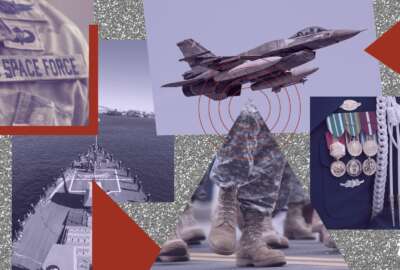As the Marine Corps plans its force of 2030, finding a way to retain its best service members in a competitive job environment is driving a host of new programs. Many of those programs offer flexibility to follow individualized career paths that were not previously available.
Training new recruits and preparing them for a technical multi-force environment is another priority for the Corps. Marine Corps Commandant Gen. David Berger said Marines need the extra training so they have versatility from early in their careers. New recruits now spend 13 weeks at Marine Corps recruit training, with another 12 weeks of follow-on courses. Instead of learning to use one weapon system, Berger said Marines are now training on a whole host of different systems.
“When you graduate, you’re going to be competent on all weapon systems, all communication systems and have a basic understanding of emergency medical care,” Berger said.
Although the Marines have not had the same level of difficulty recruiting as other services, the Marines’ talent management 2030 update includes a plan to recruit with an intent to more effectively retain service members. To do that, the Marines introduced a series of options to create flexibility in their career paths. That includes plans to offer alternatives to traditional career paths like the career intermission program where Marines pursue specialized education or credentialing, or take time away from careers to focus on family, and then later resume their career without penalty.
“Talent management 2030 directed a paradigm shift from our legacy high turnover “recruit and replace” personnel model toward one characterized by a greater emphasis on investment and retention of our most capable Marines,” the update said.
Across the Defense Department, the services are looking at demographic changes that will create a smaller pool of recruits in the future. The update calls for greater efforts at recruiting to counter those changes.
“This is a challenging time to bring people into the service. No question — any part of government service, I think it’s a challenge,” said Berger.
The update includes plans to reorganize specialties for unrestricted line officers to reflect more diverse areas of expertise. Those changes will be part of a pilot program in the 2025 officer promotion boards.
“It’s the tone of the organization where people work which is set by the leaders. We focus very much on leadership and the tone of the organization to make sure it’s a place people want to stay,” Berger said.
In a nod towards stable family life, the update calls for the Corps to minimize permanent changes of duty station when possible and evaluate enlisted career paths. Some of the retention initiatives are already in progress, with plans to expand this year.
The Corps expects to update the enlisted retention and career development program, which creates new career opportunities, by the third quarter of this year, and expand both some quality of life initiatives and a program that allows for lateral transfers into the Corps from some career specialties.
In addition to retention, the Marines have modernization plans reflecting the looming threat in the Pacific Theater and the need to operate in a multi-force scenario.
“Starting with the understanding of the threat, how do we fight? How do we operate, incorporating allies and partners, because we are not going to be able to do it all by ourselves. And then [planning] organization and training. That was the sequence,” Berger said at a Brookings Institution seminar on May 23.
The need for joint operations means working with different services to integrate command and control, and to enable uninterrupted communications.
“We have to integrate; we have to tie together the whole command and control system. But the difference is two or three years ago, there was a notion that we needed to come together on a common set of hardware. Now the notion is, keep the hardware that you’ve got. We have to find ways where we can move information between existing programs,” said Berger.
Berger said years of deployments left the Marines in need of rebuilding, but they are now ready to move forward with modernization.
“It’s how much you view near-term readiness versus long-term readiness because the decisions made right now can affect [you] five years from now. I think we’re headed in the right direction on re-defining what readiness is beyond just what is available this afternoon,” Berger said.
Copyright
© 2024 Federal News Network. All rights reserved. This website is not intended for users located within the European Economic Area.

